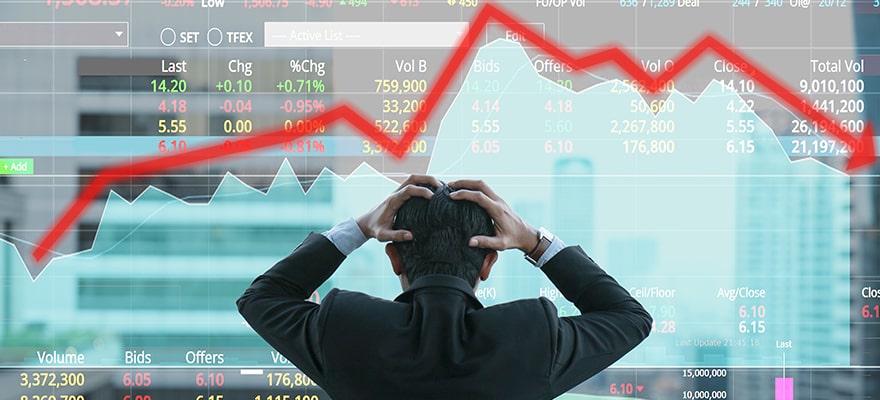A downward correction in stocks was long expected by many in the market, but at the same time, it began on Monday evening as a kind of surprise, with no particular excuse or a satisfactory starter.
There were no alarming verbal remarks of any officials or weak statistical data right at the moment.
Some similar drop would still have been more appropriate last Friday, May 7, after the U.S. labour market report revealed only 266 thousand new jobs in April instead of the widely expected indication of nearly one million recruitments, plus the figure for March which was bitterly adjusted down from 916 thousand to 770 thousand jobs. But the market reaction, which was delayed for three days, seem to not agree well with normal logical constructs.
Besides, even after U.S. President Joe Biden defended himself on Monday against critics who say expanded unemployment benefits offered in the COVID relief bill passed in March are keeping Americans from taking new jobs, many experts are still inclined to interpret the "bad" job statistics as a reaction to Biden’s actions.
Again, the recovery of almost one million jobs in a couple of months instead of just one month is difficult to call "bad" or any other synonym for a negative assessment.
That is still a big move towards the light at the end of the COVID tunnel.
Another thing is that the overheated high tech sector is still the major driver of sell-off, while many other parts of the broad market are seen to not react significantly.
The S&P 500 index automatically lost about 133 points from its highest peak to the lowest bottom of this month so far which means just a 3.13% loss altogether.
Not such a big movement for now if to compare it with more than a 7.1% loss for the high tech Nasdaq 100 index. Yet, the more conservative pool of companies "incorporated" into the old-school Dow Jones industrial index are just a little more than 1.7% off last week's close on average.
There is at least an initial impression of a rather natural technical correction in those assets where prices were too far ahead, while the rest of the market remains minimally affected.
Of course, this may be a misguided feeling. Yet, the indirect proof that it could be true is that retailers like McDonald's, Coca-Cola or Home Depot, cyclical stocks of iron and steel or energy companies did not lose any serious part of their value, while some of them even gained.
The fabulous banking four including JPMorgan Chase, Morgan Stanley, Citigroup and Bank of America is also intact.
Thus, the overall corrective moods seems to also remain very unevenly distributed among segments to give grounds to consider them a durable phenomenon.
On the same footing, some traders may propose that they are dealing just with a high flying and volatile flat market after the multi-month rally. Such a point of view does not contradict with reality at least until the S&P 500 index is higher than the 4,000 points landmark.
Strictly and technically speaking, the 38.2% Fibo correction of the last ascending market cycle, which started from 4122 points on March 4 and then ended at the highest height of May, lead to a quite normal preliminary assessment which resulted in as low as 4040 points level, and it still maybe inside conception of volatile flat inside the usual corrective structure on charts. 50% Fibo level comes at 3982 points level for now.
The summarised market response on today's consumer price index (CPI) inflation data from the United States has only partially, but not completely, answered whether this is the case.
It may not be entirely correct, buy the way, to attribute the current correction to actual high values of inflation. Of course, inflation has already been in the picture for several months.
And it is even much bigger than any CPI readings in some aspects, like more than 9% inflation level on gasoline or 15% on household appliances or houses, also more than 5% on many food products throughout the U.S and Europe too.
But after all, inflation itself even gives a new and higher scale not only to prices, but also to quarterly figures of revenue and company profits, which means that it may potentially create an additional inflationary increase in the value of most assets.
So, inflation itself is not an enemy of the market's potential for further growth. A potential threat for the market lies not in inflation itself but in a theoretically possible reaction of regulatory monetary policy on inflation when the prices start to jump.
But it looks like the U.S. Federal Reserve provided an alibi for itself by reiterating so many times that they are not going to raise interest rates in the near future or that the regulator does not even nourish any idea concerning asset purchase program tapering.
As long as the Federal Reserve remains committed to its "printing press" policy, inflation will probably be the stock market's ally, not its enemy.
Of course, in the medium term. Short term market corrections within a month or couple of months’ period as long as volatile flats and other small technical "furniture" just perfectly fit into this general fundamental design.
Disclaimer: Analysis and opinions provided herein are intended solely for informational and educational purposes and don't represent a recommendation or investment advice by TeleTrade.
















